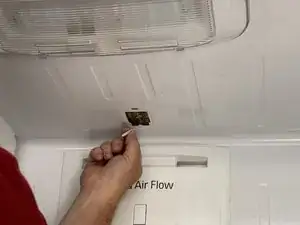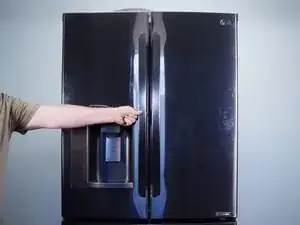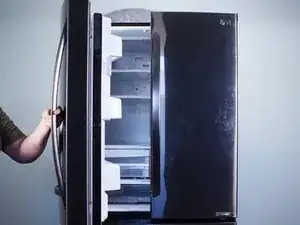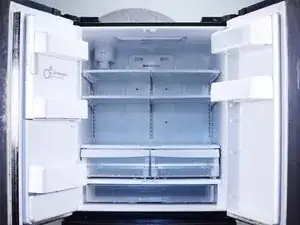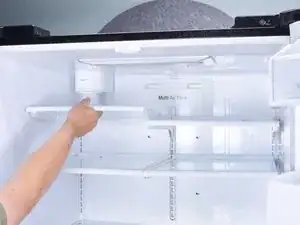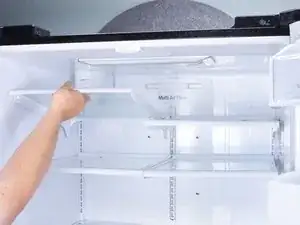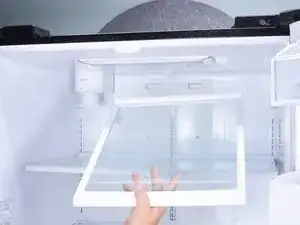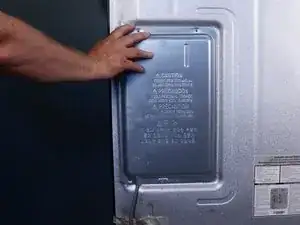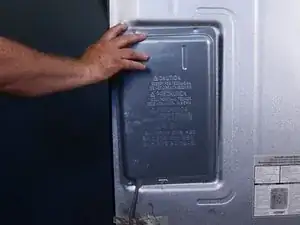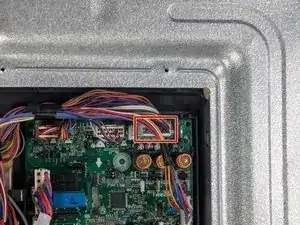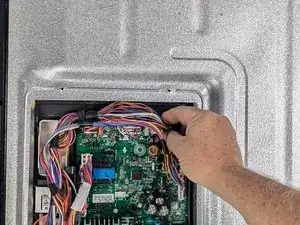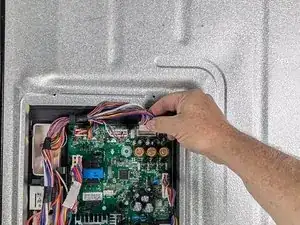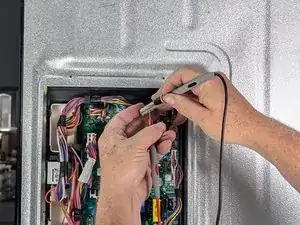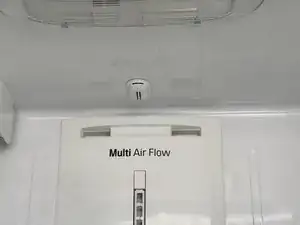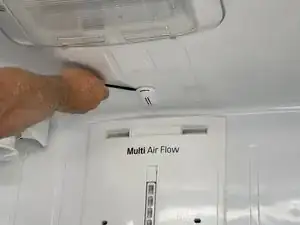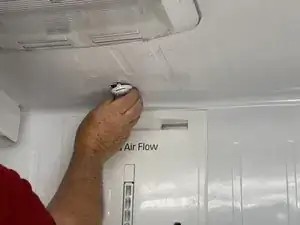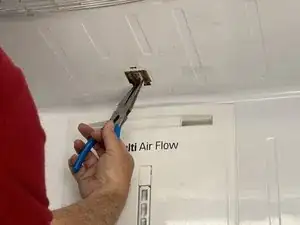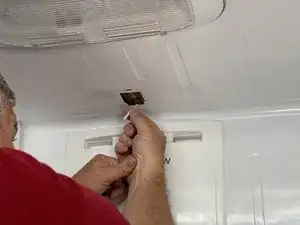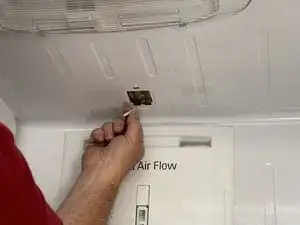Introduction
Use this guide to test your LG refrigerator's fresh food compartment thermistor.
This thermistor provides temperature data to the main control board. The board monitors its resistance, which varies with temperature.
If the thermistor fails, the refrigerator will not function correctly. Generally, it will not be able to maintain the correct temperature in the fresh food compartment. Depending on the fault (short or open circuit), it may cease functioning altogether and give an error code.
If the refrigerator's wiring harness fails, either with an open circuit or a short circuit, the refrigerator is not repairable. Since the harness is foamed in place and cannot be removed for repair, the refrigerator must be recycled.
Tools
-
-
Unplug your refrigerator before you begin your repair.
-
Condenser fan motor
-
Compressor motor and thermal overload device
-
Water supply valve assembly
-
-
-
Lift up the front edge of the shelf to release it.
-
Unhook the shelf and remove it.
-
Repeat the last two steps for each shelf you wish to remove.
-
-
-
Measure the resistance between the two white wires as shown in this document.
-
Use a multimeter set to the ohms (Ω) setting.
-
Gently put the probes into the connector holes that correspond to the white wires. Alternatively, you can use sharp insulation piercing probes on the white wires.
-
Measure the resistance of the thermistor.
-
If the measurement is neither open (OL) nor shorted (less than 1Ω), measure the temperature in the fresh food compartment. Compare these figures to this chart. If it isn't in spec, go to the next step.
-
-
-
If the measurement at the control board was out of spec or showed open (infinite resistance) or short (near zero resistance), check the resistance at the thermistor itself.
-
Disconnect the thermistor from the wiring harness. You will likely have to cut one or both of the leads, unless there is a connector near the thermistor.
-
If the thermistor tests okay, the problem is in the wiring harness. You can inspect the accessible parts of the harness for faults. If the fault is not accessible, the wiring harness is foamed in and can't be repaired. Recycle the refrigerator.
-
To reassemble your device, follow these instructions in reverse order.
